The Gallipoli Landing and the first Anzac Day
As we ready ourselves to commemorate Anzac Day at the Australian War Memorial, we can gain a small insight what it was like at the Gallipoli landing. Personal diaries held by the Memorial describe what it was like landing at Gallipoli on Sunday, 25 April 1915 under the heavy fire of Turkish machine guns. Although the photos accompanying this blog post do not relate directly to the diary entries, they are able to illustrate the stories in a different way.
Sergeant Apcar de Vine of the 4th Battalion writes: "landed myself at ... midday under a hot shrapnell [sic] fire, all landed safely...
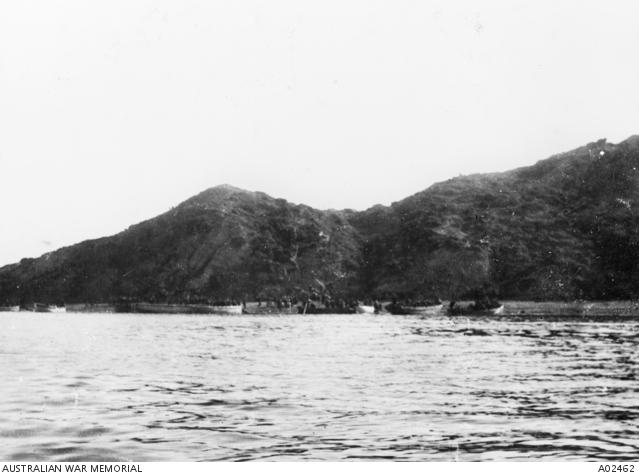
Troops landing on the beach at Anzac Cove on the morning of 25 April.
Was detailed to carry ammunition to the firing line all the rest of the day under heavy shrapnell [sic] fire...
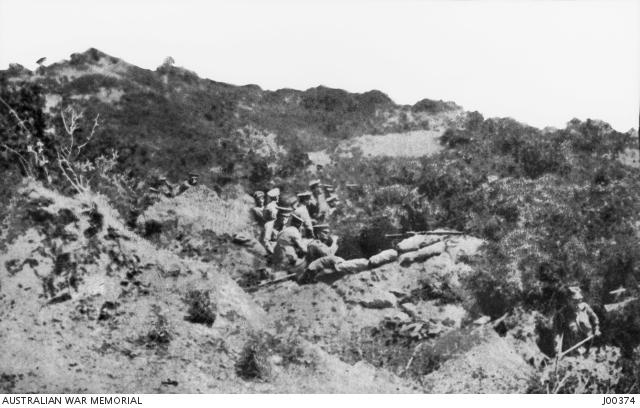
...many casualties... had several narrow escapes... had to take water to the 22nd Batt[alion] in the trenches at night ... lost myself coming back to the base was seen by the Turkish snipers & fired on, not hit, got back safely under cover of darkness, very tired, have been under shrapnell [sic] & rifle fire all day... rifle fire round me all night"
A more detailed account comes from Acting Sergeant Adrian Wilmot Delamore of the Auckland Infantry Battalion (NZ1B): “Off at one this morning & about dawn we heard a terrific bombardment...
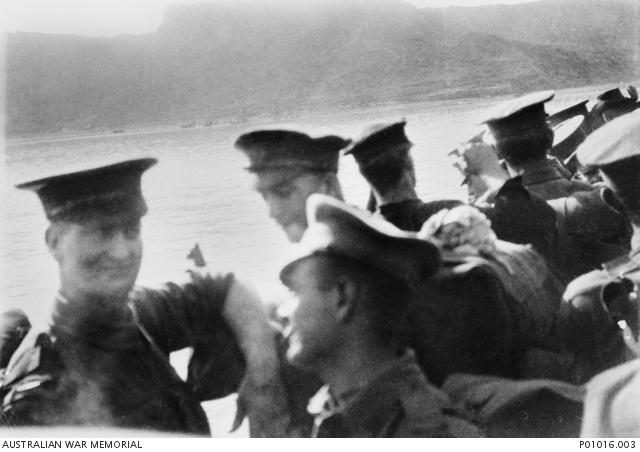
... our battalion packed on three or four barges & a destroyer towed us towards the shore as far as she could ...
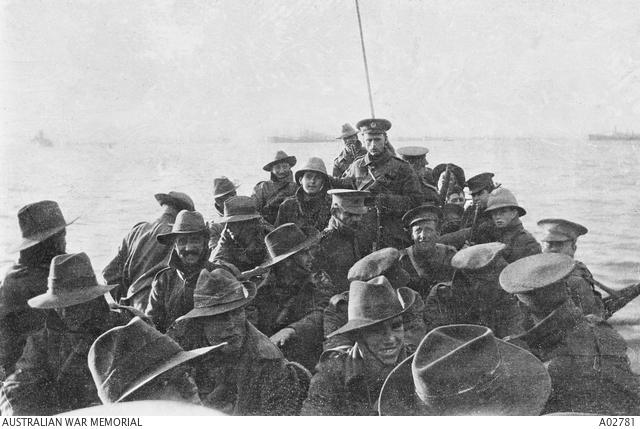
... then cast us adrift. That position was scarcely safe for bullets were flying all round hitting the boat, but we had only one casualty. Some of us waded neck high to shore... The whole trouble was we had no artillery on land & the warships with their field guns could not reach the enemy’s guns. ... our losses from their shrapnel was severe... Indeed I do believe it was touch & go whether we abandoned the attempt or not.... The country is brutal... besides being hilly & broken, the ground is covered with scrub from 4 to 6ft high & you cannot see an enemy if he does not wish it. Sometimes a shell will scatter them in a hurry & then rifles & machine guns get a picking. One other trouble is that the snipers, seem to be numerous & deadly. One of the consequences of this is that the losses in Officers is out of proportion to the men... Our battalion must have lost close on half its strength. We could not stand many days like this”
A different point of view is recorded by Colonel Reginald Jeffrey Millard, OBE, CMG of the Army Medical Corps who was on one of the hospital ships anchored offshore. “At 4am we could hear the guns ... About 5 we could see the flashes ... we could see the boats carrying the troops ashore. It was a glorious morning, dead calm and not a cloud in the sky ... The whole scene was intensely interesting ... Straight before us was the landing place, a narrow strip of beach already crowded with our men ... we could clearly see our men skirmishing up the steep hills among the low scrub. The covering party (3rd Brigade) had landed at 4am without very much loss and with fixed bayonets had at once captured the first trenches and 3 machine guns and then had pushed on straight up the hills... Hardly had we anchored ... when big shells began to fall among us...
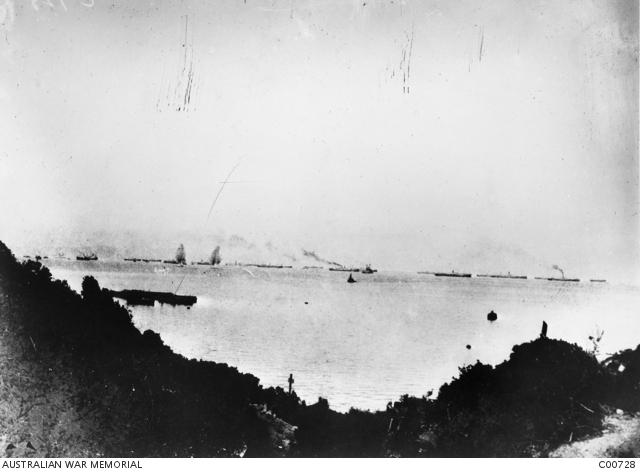
... On a signal from the Naval authorities all the transports got up their anchors with remarkable celerity and moved further out from shore ... through our glasses [we] could watch the progress of the fight along the ridges where we could see our men dodging in and out among the bushes ... there was no cessation of rifle and machine gun fire.
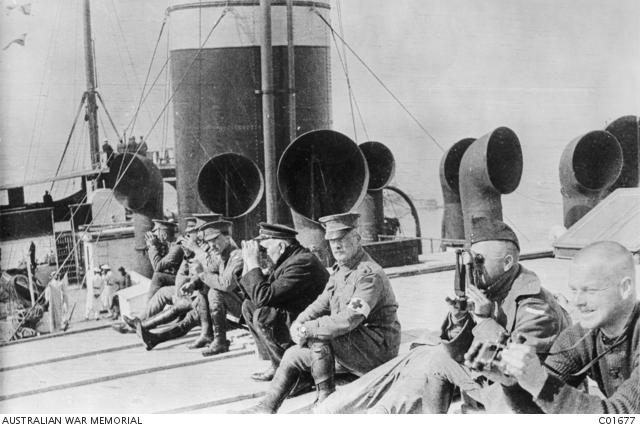
... Far into the night we heard this as intense as ever. About 9pm we ... received 75 wounded many very severe... About midnight came a fearful report that the attack had failed ... But to their delight, when they got there they found no re-embarkation at all but fresh troops disembarking ... I was hard at work with the wounded and tried not to think of the horrible possibilities of that re-embarkation in the dark from a crowded beach with the enemy pouring down shrapnel and machine gun fire as they pleased.
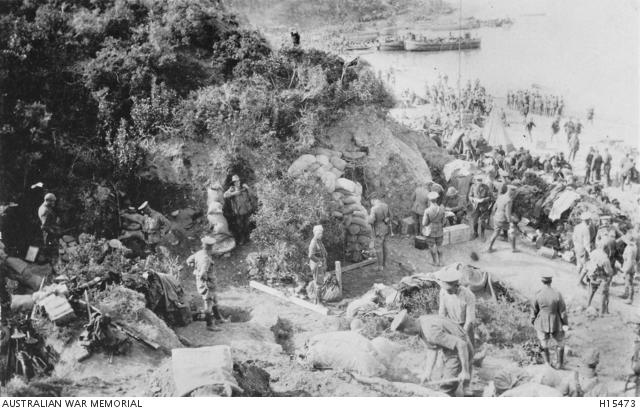
The first Anzac Day was commemorated in numerous locations in 1916. In Moascar (Egypt) Lieutenant R W McHenry MC of the 2nd Field Artillery Brigade describes the day: “A church parade was held this morning to commemorate the landing and the lads who fell on the Peninsula. Those who were at the landing wore a red ribbon and those who had seen service on the Peninsula were entitled thereby to a blue ribbon worn above the left breast pocket. I was secretary of a sports meeting which passed off fairly satisfactorily in the afternoon...
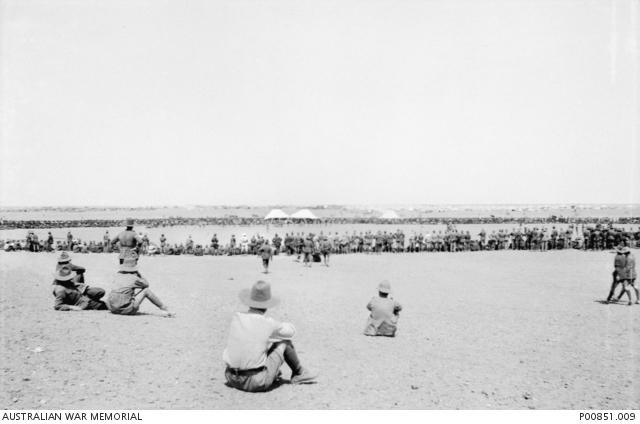
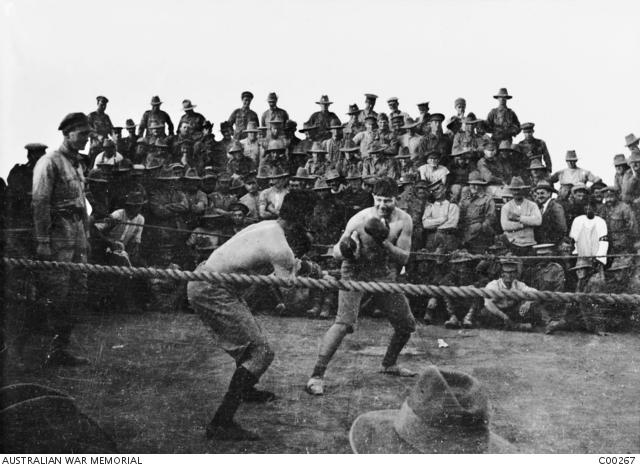
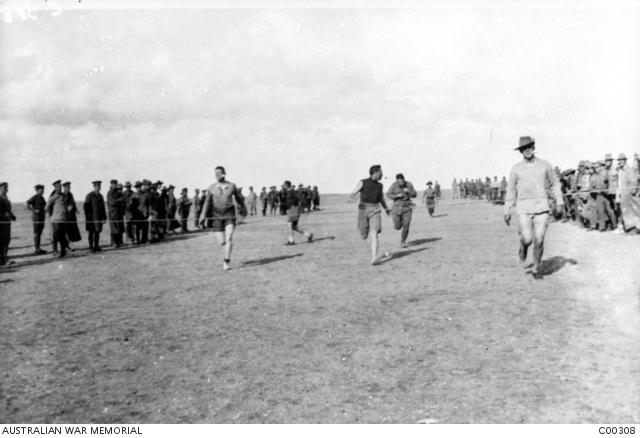
... A concert was held in the evening”.
In a detailed letter to his father, Private Carroll (4th Australian Infantry Brigade) relays his experiences about Anzac Day 1916 on the Suez Canal. He pays particular attention to the water carnival, mentioning that some men had spent weeks making their vessels.
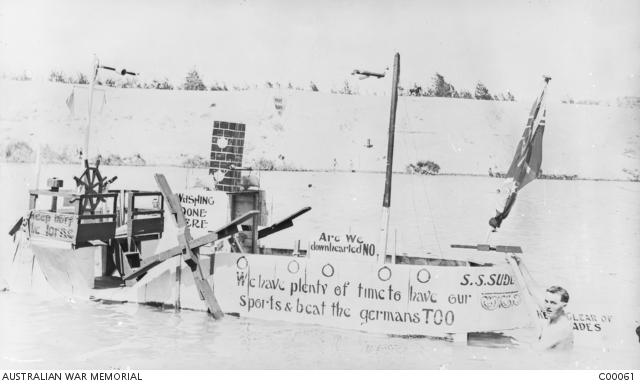
He also mentions the men that were in fancy dress.
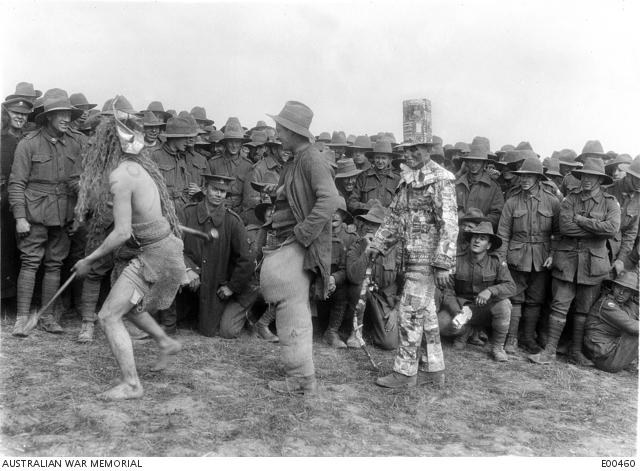
Similar events took place in 1917: “Anzac Day [in England]. Memorial service in the morning. Sports in the afternoon. Concert and supper in evening. Supper not over until 2am next morning”. Presumably such events happened in 1918 although Sergeant de Vine states that where he was stationed in France: there were “no sports or even a drink, everything very tame”.
These diaries highlight why we commemorate Anzac Day and what it meant to the people who fought at Gallipoli. In the words of Lieutenant Robert McHenry MC (2nd Field Artillery Brigade): “I had never imagined anything so fearsome in my life and if I get through it is a thing I will never forget”.